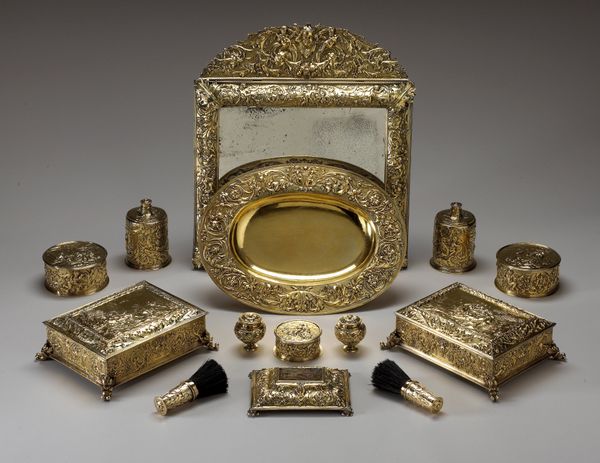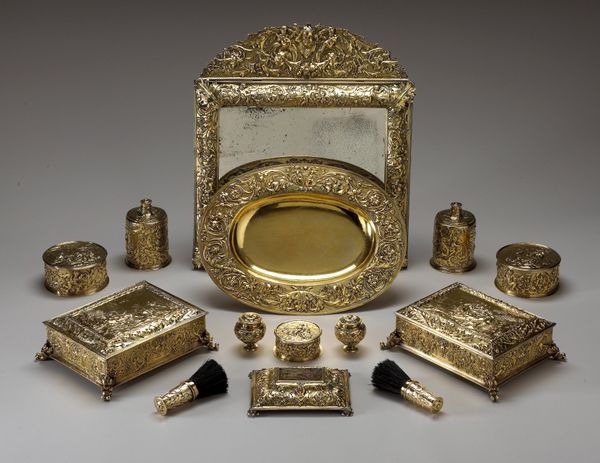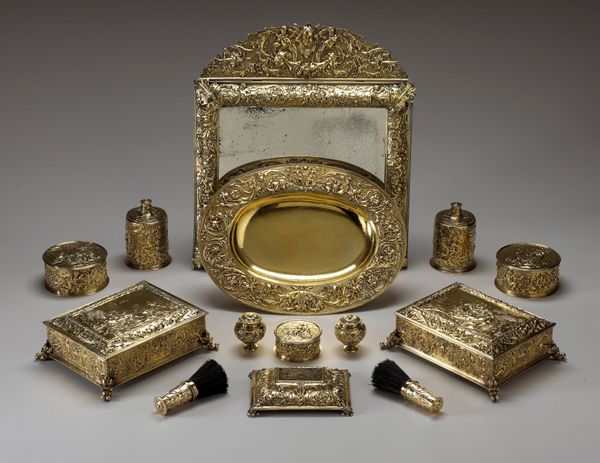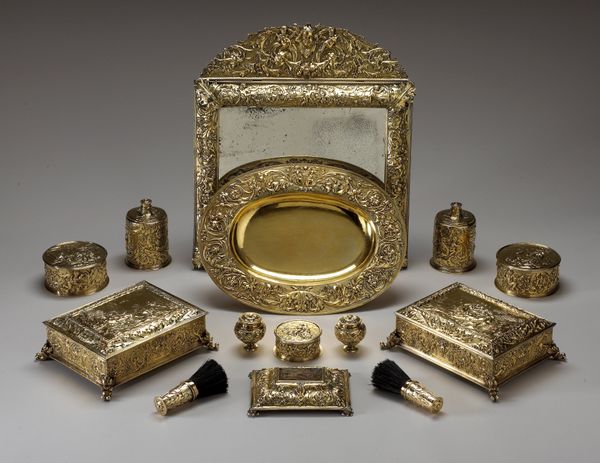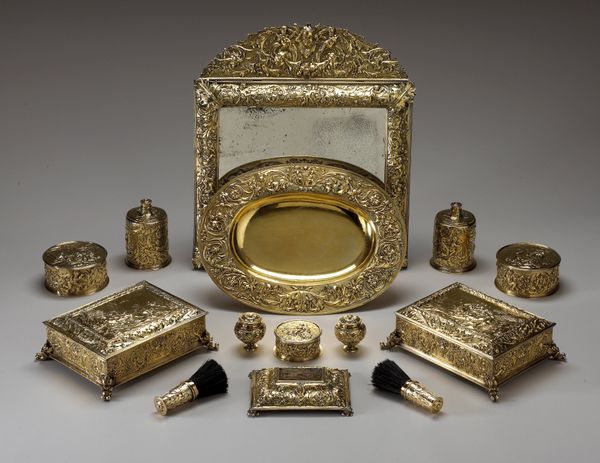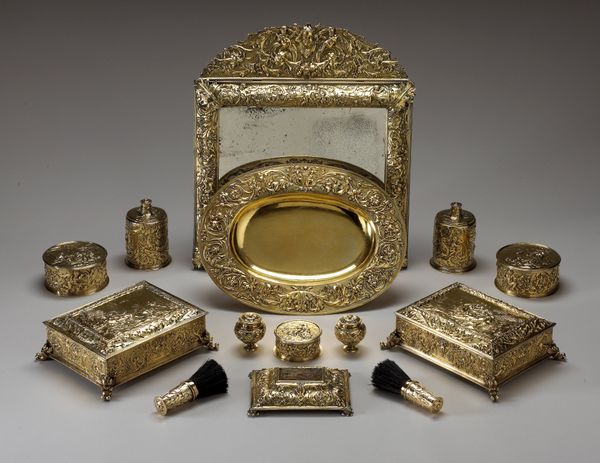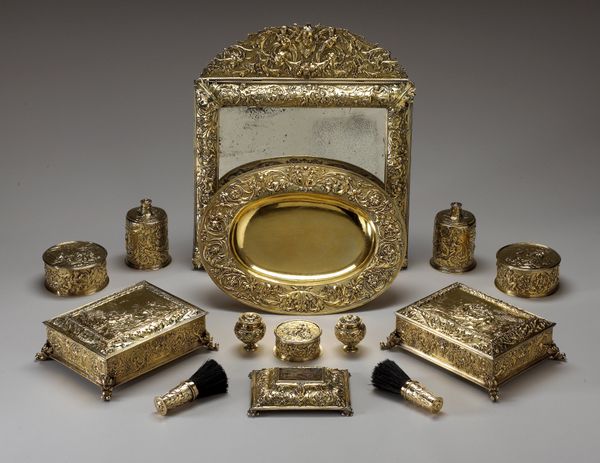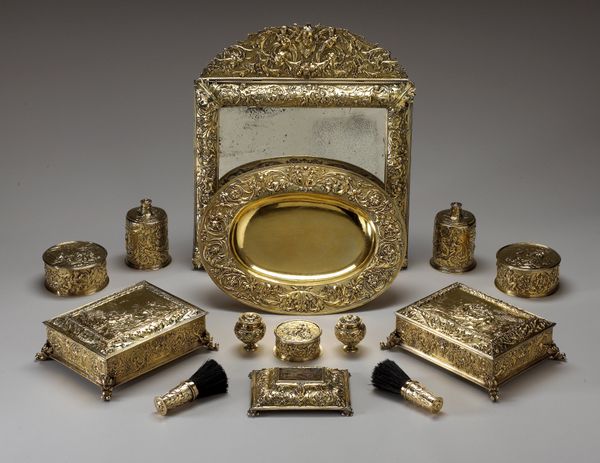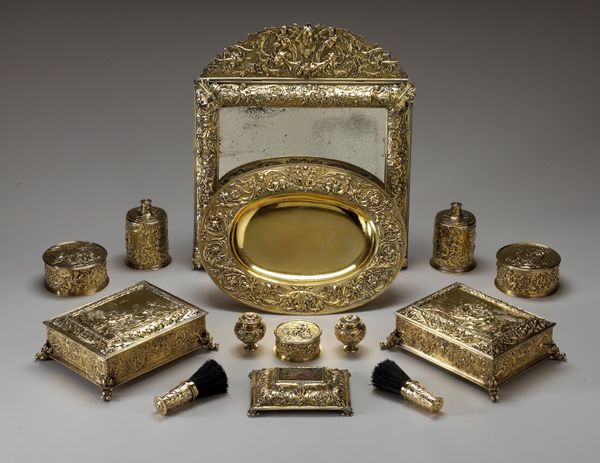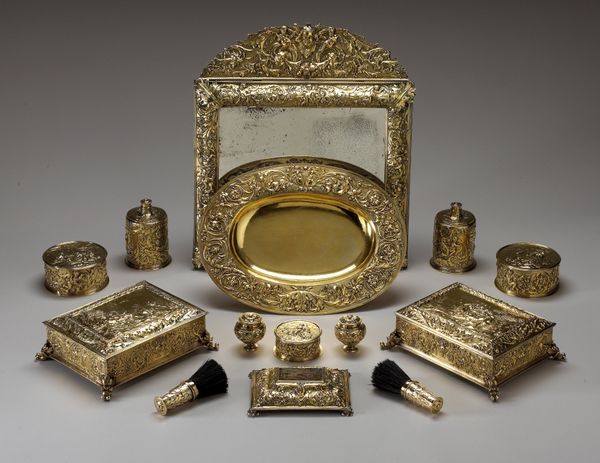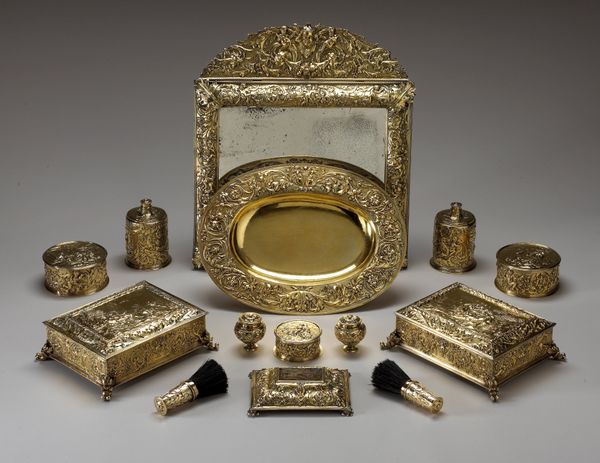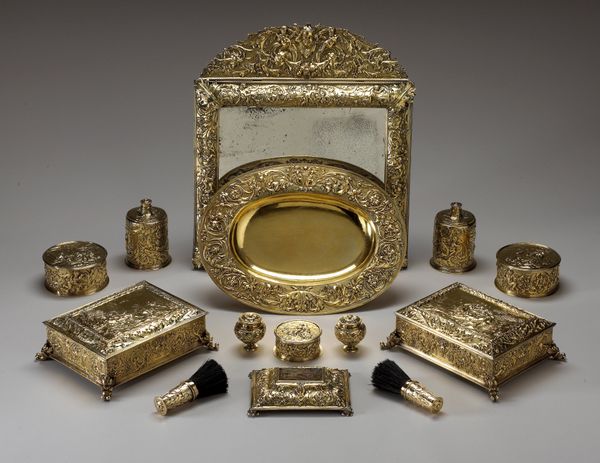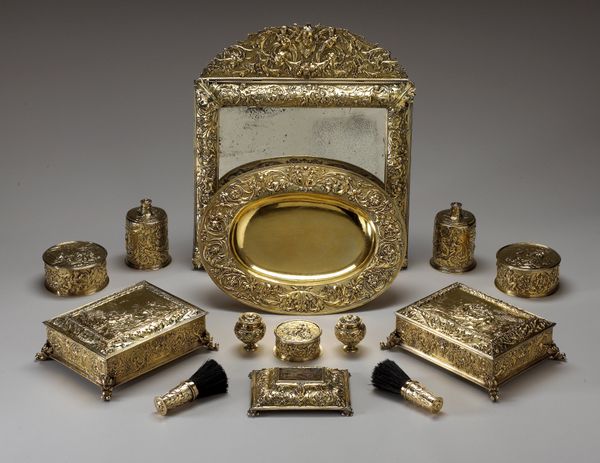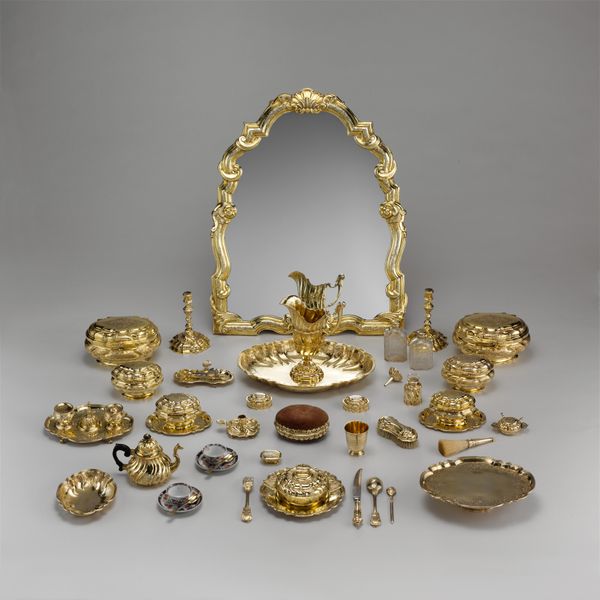
metal, sculpture
#
baroque
#
metal
#
sculpture
#
decorative-art
Dimensions: 5 13/16 x 3 7/8 x 3 7/8 in. (14.76 x 9.84 x 9.84 cm)
Copyright: Public Domain
Curator: I'm drawn to the sheer volume of ornamentation here. This is a photograph of a "Scent Flask," an object dated 1683 by William Fowle. You can find this baroque, metalwork marvel at the Minneapolis Institute of Art. What is your initial impression? Editor: Visually overwhelming, wouldn't you agree? A glut of gilded metal, an embarrassment of baroque detail. There's a tension between the objects' practical functions and their obsessive ornamentation. Curator: Right. Think about scent during this period. It wasn't merely cosmetic but essential for masking unsanitary conditions and perceived foul odors, so the flask elevates a mundane necessity to ritual significance, literally a gilded defense against the world. These metal boxes and the trays themselves—each serves as a bulwark of privilege. Editor: Precisely. This feels like applied semiotics; consider the surface textures! The swirling foliate patterns and the putti enacting scenes, not to mention the material itself... How would you say these operate together? Curator: The iconography all points to the glorification of self. The metal acts as a reflective surface—in boxes, mirror, trays—doubling as a memento mori with the silver's eventual tarnish to darkened hues, a reminder of vanity's ephemerality. Consider also the implied olfactory dimensions: the transportive qualities and aromatic memories encoded within each whiff. Editor: An acute point about transience. Though cast in what appears to be solid silver gilt, its intended purpose revolves around intangible—fragrant and atmospheric—concerns of the everyday. I notice that even the symmetry of the arrangement reinforces an overwhelming sense of opulent artifice, something carefully posed for maximal visual impact. Curator: An excellent observation. Fowle’s work embodies the psychological weight carried by scent in culture. In today's era of sanitation, the importance of covering offensive odours is hardly valued at all. Editor: Yes, a true testament to our diverging eras. It reveals so much of ourselves and the expectations we project. Curator: In essence, this "Scent Flask," created by William Fowle is much more than decoration; it's a time capsule reflecting the psychology and sensibilities of 17th-century England.
Comments
No comments
Be the first to comment and join the conversation on the ultimate creative platform.
